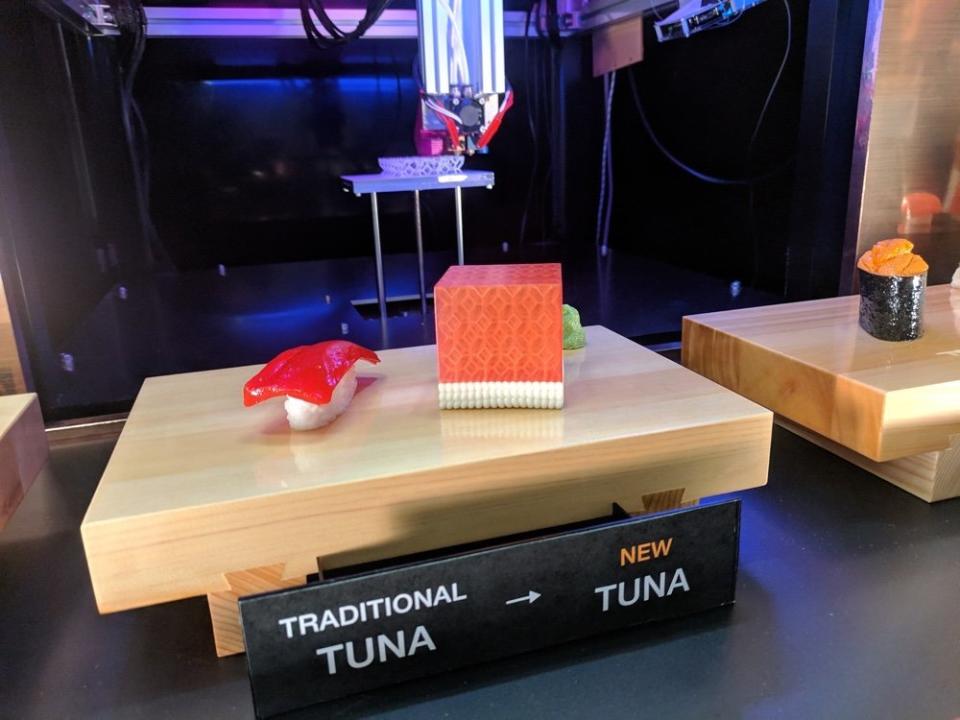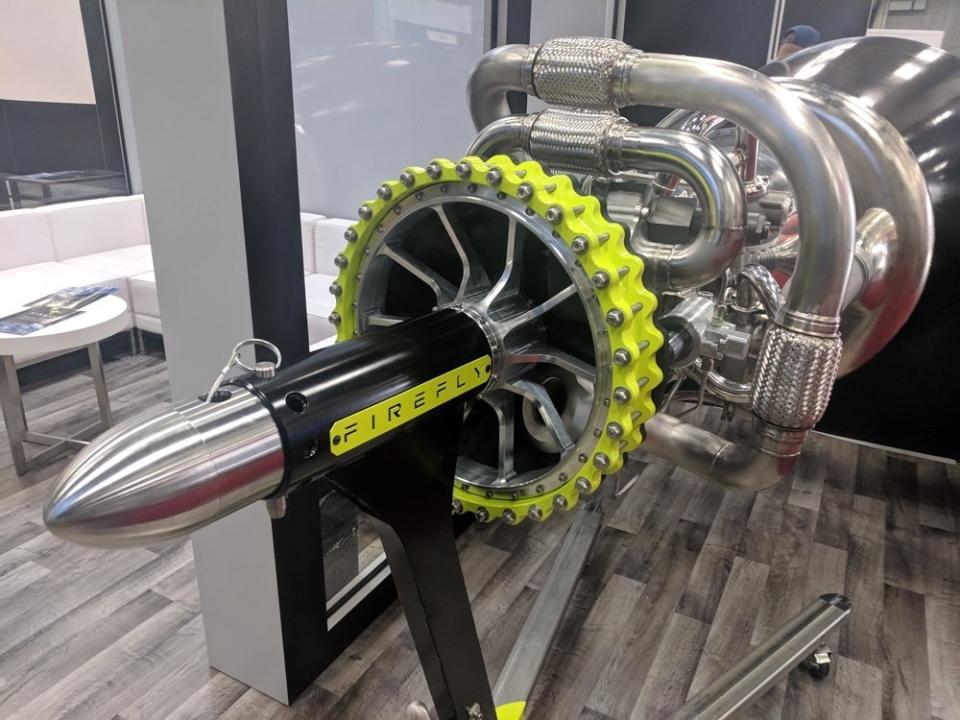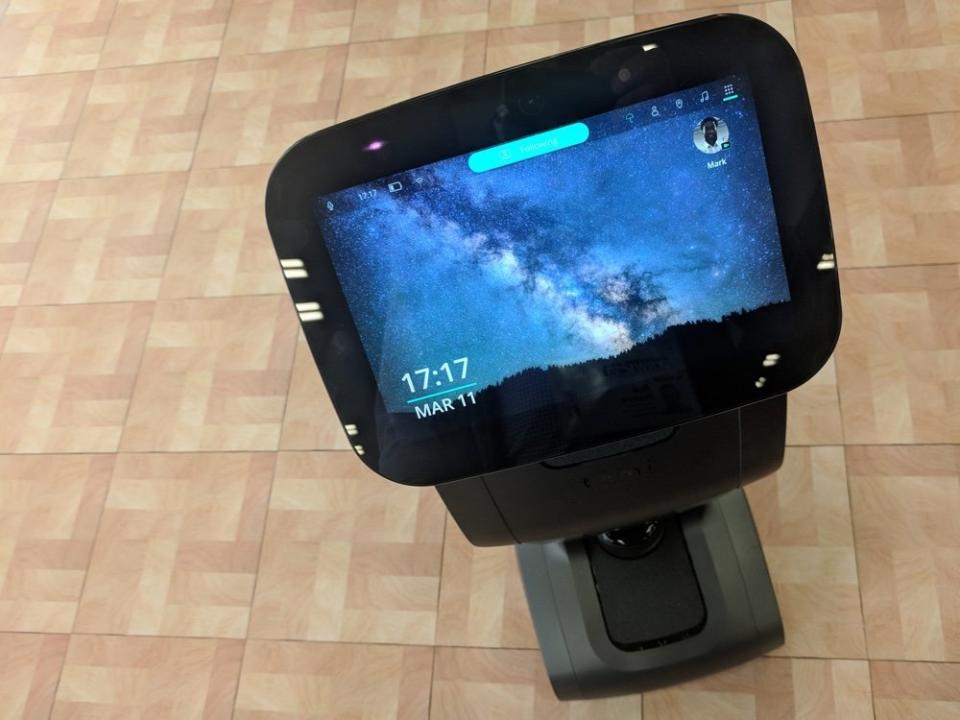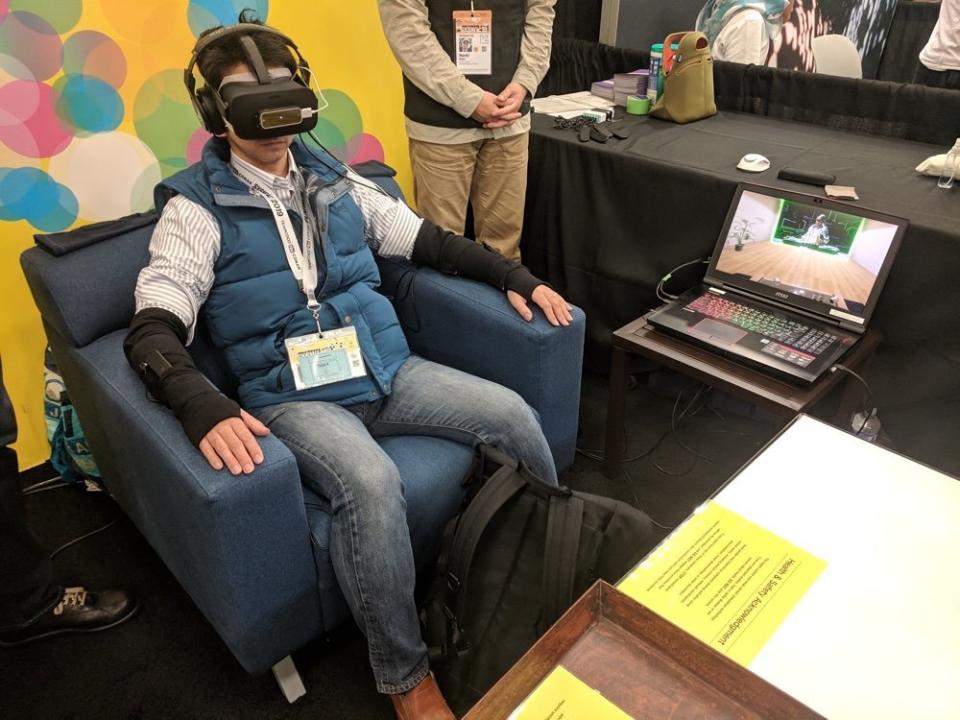SXSW 2019: Synthetic sushi, a buggy demo, and other weird gadgets

AUSTIN—SXSW isn’t just an extended talkfest. Attendees can take a break from this conference’s archipelago of panels, keynotes and Q&As to wander the trade-show exhibits that fill most of the first floor of the convention center here, where the lineup of tech demos includes some strange sights.
Sushi Singularity
3D-printed sushi isn’t that crazy of an idea anymore—companies have been shipping 3D printers that extrude food for several years now. But this concept from Open Meals, set to launch as a Tokyo restaurant next year, adds DNA testing to the recipe. The idea is that you’d book a reservation, the place would send you a DNA testing kit, you’d mail back a saliva sample and the restaurant would use that to craft sushi matched to your body.
Project manager Roy Kaneko noted that the company needs to accelerate the printing time for its artfully rectilinear synthetic seafood from 30 minutes per piece to about 10 minutes. A cost that he estimated at "maybe around a thousand dollars per meal” could be another obstacle, but I’m sure at least some SXSW attendees would ante up.
Firefly Alpha

Firefly Aerospace’s exhibit was easy to spot: Just look for the large payload fairing looming over its setup, then turn your attention to the model of a Lightning rocket engine below. This space startup, based in nearby Cedar Park, aims to launch satellites weighing up to 1,000 kilograms to low Earth orbit for $15 million, below such small-sat launch rivals as Rocket Lab, Virgin Galactic and the Northrop Grumman (NOC) subsidiary Orbital ATK.
It says it can do that by building its rocket’s tanks and structures out of lightweight carbon-fiber composite, which in turn reduces the amount of propellant needed to send the Alpha and its payload to space. The company plans on a first launch in 2020.
Temi

Temi is a household robot that you can think of as an Amazon (AMZN) Echo Show on wheels. It also sells for $1,999, but is temporarily discounted to $1,499. The Temi includes a touchscreen, a voice-driven personal-assistant app (which proved unable to respond to commands in the convention center’s noisy environment) and cameras and microphones that let it host video calls and follow you around the house. One attendee, however, suggested that this device won’t really live up to its potential until its base incorporates a Roomba floor-vacuuming robot.
Comptics

This experiment sponsored by Japan’s NTT uses wired sleeves to simulate touch along your arms. A demo offered on the show floor used that “haptic” feedback as an add-on to a virtual reality experience. But I’m not sure that’s a good idea. The demo’s attempts to simulate my floating in a mug of beer or a fireworks display felt more like little pin pricks than anything else. Then a system-error interlude had bugs—as in, images of actual insects—raining down on me and feeling like they were landing on my arms. I do not need to repeat that moderately terrifying part of the demo ever again.
NEC Code

The table next to Comptics featured a different take on mashing up computing and biology. This project by NEC uses a scan of your irises to generate a distinct numeric code, which software then turns into a unique pattern of circles and semi-circles that you can have turned into jewelry, fabric or tableware.
Umay Care

I wish I’d stopped by this exhibit after the Comptics demo. This company aims to offer "thermal meditation" in the form of a $279 contraption you place over your closed eyes to warm your eyelids. They tout that as a remedy for extended screen time. And, having had too much of that at SXSW, I had to try it. The Umay’s pods offered a gentle pulsing heat that I found oddly relaxing and not the same as having a warm cloth over my eyes. Incidentally, testing this allowed me to take one of my stranger selfies.
Sienna the sloth

Calm, a meditation and sleep-therapy app for Android and iOS, fell back on a traditional and often-successful tactic to get some attention at big shows: Bringing an unusual animal. Sienna, a two-toed sloth, lounged across a small tree, gripping its branches with freakishly curved claws and eating bits of banana fed to her by a handler. A crowd gawked from a few feet away, but she appeared utterly oblivious to the hype--which after a few days of SXSW, seemed like its own luxury.
More from Rob:
Email Rob at rob@robpegoraro.com; follow him on Twitter at @robpegoraro.


